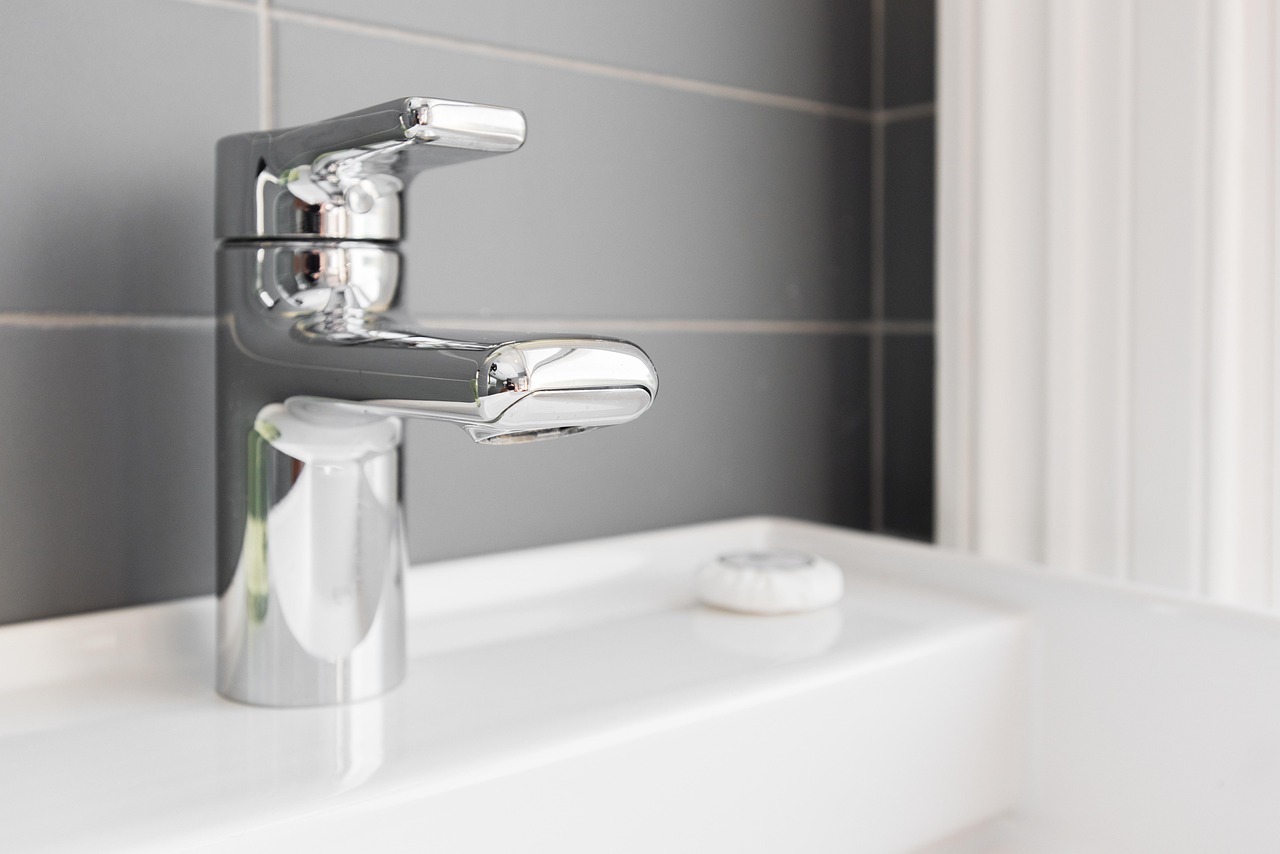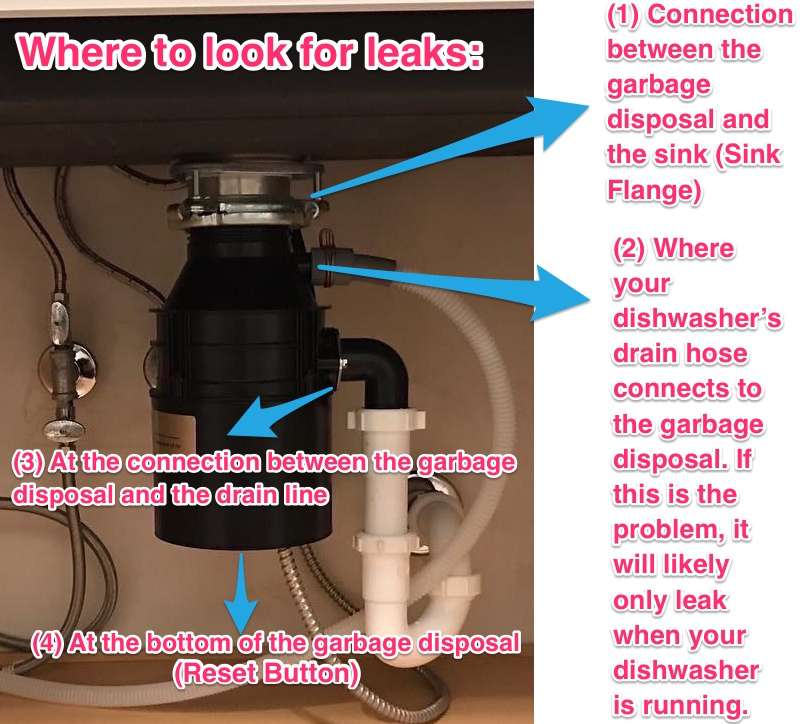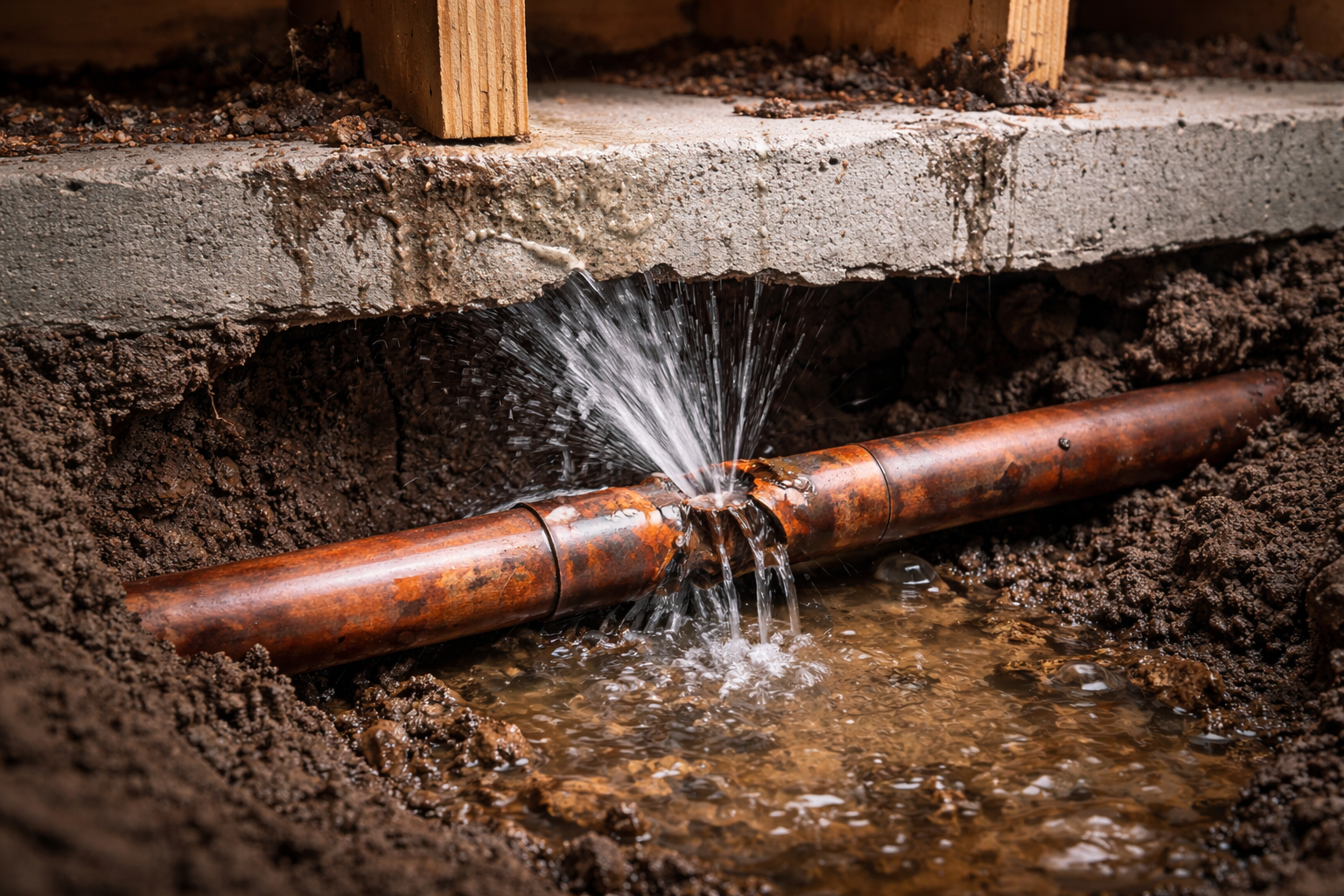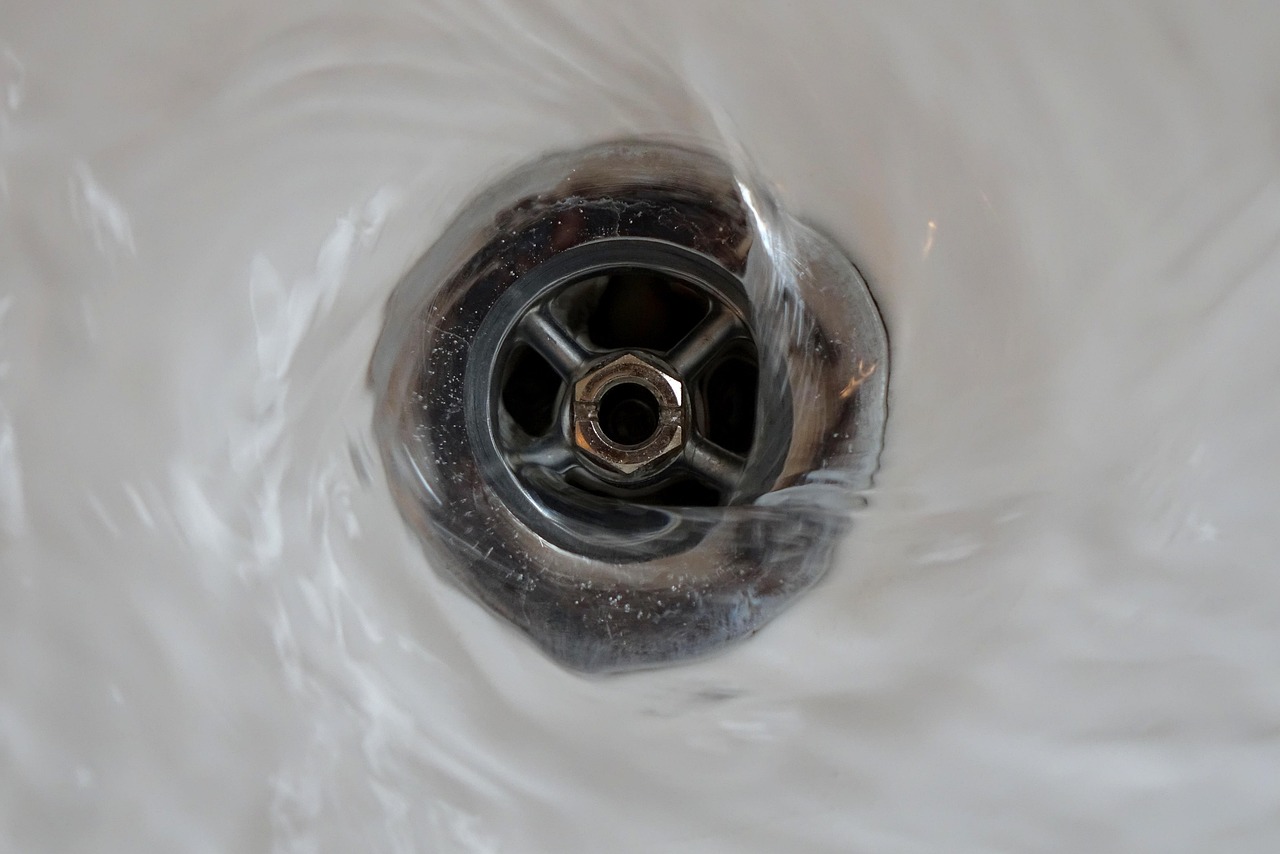
How to Find a Water Leak in Your Home
Water leaks are more than just a nuisance—they can quietly rack up hundreds or even thousands of dollars in water bills and home repairs if not caught early. From minor drips to major slab leaks, water problems can develop behind your walls, under the floors, or even beneath your foundation. The good news is that with a few simple checks and the right knowledge, you can learn how to find a water leak in your home before it turns into a major headache. Knowing how to spot the warning signs and where to look is key to catching issues before they escalate.
Check the Water Meter First
One of the easiest and most effective ways to check for a hidden water leak is to examine your water meter. To do this, first turn off all water-using appliances, faucets, and sprinklers inside and outside your home. Once everything is off, find your water meter, which is usually located near the curb or on the side of your house. Take note of the numbers on the dial or take a quick photo. Then wait for about one to two hours without using any water at all. When you check the meter again, if the numbers have changed—even slightly—it’s a strong indication that water is leaking somewhere in your plumbing system. This test is one of the best starting points when you’re figuring out how to find a water leak in your home, especially if you don’t see any obvious signs of dripping or pooling.
How to Trace a Water Leak in a House
When trying to figure out how to trace a water leak in a house, you’ll want to follow a methodical approach. Start by isolating specific zones in your home. For example, turn off the valves that control water to bathrooms or the kitchen and recheck the water meter after each isolation. If the meter stops moving once a certain zone is off, you’ve narrowed down the leak’s location. Next, inspect visible pipes and connections in that area. Feel along pipes for moisture or use a dry paper towel to see if it absorbs any water. Also, look for subtle changes like warped baseboards or peeling paint. Tracing a leak means combining visible inspections with water flow testing, and it’s a crucial part of how to find a water leak in your home.
Look for Visible Signs of Leaks Indoors
Sometimes, leaks leave visible evidence. Walk around your home and pay close attention to your walls, ceilings, floors, and even the air. Stains or discoloration on drywall or ceilings are a red flag. Warped flooring, bubbling paint, peeling wallpaper, or soft spots in wood flooring can all indicate water is leaking nearby. Even musty smells in a room—especially bathrooms, kitchens, or laundry areas—can point to moisture buildup behind the walls or under floors. You may also hear dripping or running water when nothing is turned on. All of these are signs that shouldn’t be ignored, and understanding how to find a water leak in your home starts with recognizing these subtle clues.
What Is the Best Way to Detect Water Leaks?
The best way to detect water leaks combines both simple DIY techniques and modern tools. Visually checking for damp spots, mold, or unusual smells is a good starting point, but using your water meter is still one of the most reliable methods. For a more advanced approach, moisture meters and thermal imaging cameras can be incredibly helpful. These tools can detect moisture behind walls or temperature differences where leaks might be cooling the surface. In some cases, acoustic leak detectors—tools that listen for water movement inside pipes—are used by professionals. The most accurate detection method depends on where the leak is suspected, but combining multiple strategies will give you the best results.
Check Around Fixtures and Appliances
Beyond the structural areas of your home, it’s a good idea to check around fixtures and appliances. Kitchen and bathroom sinks, toilets, washing machines, dishwashers, and water heaters are all common sources of hidden leaks. Look under sinks for damp spots, puddles, or corrosion on the pipes. With toilets, listen for running water or do a quick dye test by adding a few drops of food coloring into the tank. If that color appears in the bowl without flushing within 10 minutes, you have a leak. Inspect washing machine hoses for bulges or cracking, check the base of the dishwasher for any pooled water, and look at your water heater for signs of rust, moisture, or leaking at the bottom. These are all prime areas where leaks develop over time and go unnoticed until they become a bigger problem.
How to Find a Leak That’s Not Visible
Finding a leak that’s not visible can be frustrating, but it’s possible with the right approach. Start by monitoring signs like an unexplained increase in your water bill, reduced water pressure, or persistent moldy odors. Use your water meter to verify that water is being used when nothing is running. Moisture meters can help detect elevated moisture levels in walls or floors, while infrared thermal cameras can reveal cool areas caused by moisture evaporation. Sometimes, the only signs are slight changes in temperature or musty smells behind walls. If you’ve checked all visible areas and still can’t find the source, it’s time to consult a professional plumber who can use advanced leak detection equipment to find the issue without tearing into walls or flooring.
Inspect the Outside of Your Home
It’s also important to check around the outside of your home. Outdoor leaks are common and often overlooked, especially in older homes or homes with irrigation systems. Turn on your outdoor faucets and examine them for dripping or leaking around the handle or spout. Walk your yard and look for patches of grass that are unusually green, lush, or growing faster than the rest—that could mean there’s an underground leak nearby. If you have a sprinkler system, inspect the sprinkler heads and any visible piping for cracks, splits, or constant drips. Another good idea is to inspect the perimeter of your home’s foundation for pooling water or signs of erosion. Outdoor leaks can slowly cause damage to your landscaping, foundation, and even your home’s structural stability.
How Do I Find a Silent Water Leak?
Silent water leaks can be especially tricky to catch because they don’t create noise or visible damage—at least not right away. These leaks are often slow drips inside walls or under floors. One way to find a silent water leak is by regularly monitoring your water usage through your utility bill or digital meter. A spike in usage without any lifestyle change is a strong clue. You can also touch areas of flooring or wall surfaces that seem cooler or softer than others, which may indicate moisture. In particularly silent cases, an acoustic leak detector or moisture sensor might be required to confirm the leak’s location. Detecting silent leaks early is essential to avoid mold, rot, and water damage over time.
Watch for Signs of a Slab Leak or Hidden Plumbing Damage
There are also a few less obvious locations where leaks may be hiding. Behind refrigerators (especially those with a water line for ice makers), inside attics near HVAC components, or in walls with water lines running through them are all potential hiding places. One particularly tricky type of leak to detect is a slab leak, which occurs in the water lines running beneath your concrete foundation. Signs of a slab leak might include warm or damp spots on the floor, unexplained mold or mildew smells, sudden drops in water pressure, or even cracks in tile flooring. If you suspect a slab leak, it’s usually best to contact a professional plumber who can use specialized equipment to pinpoint the problem without unnecessary damage to your home.
Tools That Can Help You Find a Water Leak
For homeowners looking to go a step further in their inspection, there are a few tools that can help. Moisture meters can measure the water content inside walls or floors and alert you to hidden moisture. Infrared cameras can detect temperature changes that may be caused by leaks. Professionals sometimes use acoustic sensors to listen for the sound of water escaping from pipes. While these tools can be useful, they’re not always practical for homeowners to buy outright. If you’ve checked all the usual spots and still can’t find the issue, bringing in a licensed plumber for leak detection is often the most cost-effective and reliable option.
When to Call a Professional
There are certain situations where calling a plumber right away is the best course of action. If you’ve confirmed that your water meter is running but you can’t find the source, or if you notice warm spots on your floor, unexplained increases in your water bill, water stains on ceilings, or multiple signs of mold or mildew, don’t wait. These signs often point to significant leaks that require immediate attention. Licensed plumbers have the tools and experience to quickly locate and fix leaks, whether they’re in walls, ceilings, floors, or underground. At Doug Herrell Plumbing, we offer expert leak detection services throughout Brevard County, including Melbourne, Palm Bay, Viera, and surrounding areas. We know how to find a water leak in your home using both traditional methods and state-of-the-art technology, ensuring your issue is resolved with as little disruption as possible.
Preventing Future Water Leaks
After you’ve found and fixed the leak, it’s just as important to take preventative steps to avoid future problems. Replace any outdated or damaged plumbing with modern materials like PEX, which is flexible and durable. Consider installing stainless steel braided hoses on your appliances to reduce the risk of rupture. Smart leak detectors are also available and can send alerts to your phone if moisture is detected in certain areas. Regularly check your water pressure—high pressure can stress your plumbing and cause small leaks to develop over time. And finally, have your plumbing system inspected annually by a licensed professional to catch minor issues before they become major ones.
Doug Herrell Plumbing and Home Water Leaks
Knowing how to find a water leak in your home is one of the most valuable skills a homeowner can have. Water leaks can develop quietly and slowly, but if you pay attention to the signs and know where to look, you can avoid expensive repairs, protect your home, and reduce your monthly water bills. Whether you’re doing a routine inspection, responding to signs of trouble, or dealing with a full-blown plumbing emergency, taking action early makes all the difference. If you need professional help detecting a leak or repairing a damaged water line, Doug Herrell Plumbing is here to help. With decades of experience and a commitment to quality service throughout Brevard County, we’re your trusted partner in keeping your plumbing system running smoothly and your home protected from hidden water damage.
What’s Next?
Doug Herrell Plumbing is a trusted leader in Brevard County, Florida, specializing in slab leak detection and re-piping services. Call us today for a free estimate before a slab leak causes unnecessary damage to your property.
About Doug Herrell Plumbing – lic#CFC 048487
Doug Herrell Plumbing has been Brevard County’s source for plumbing services since 1980. We are a family owned and operated business and take tremendous pride in providing honest and reliable plumbing services at an affordable price.
CALL 321-254-0004
Serving Melbourne, Palm Bay, Viera, Suntree, Titusville, Merritt Island, Melbourne Beach, Indialantic, Indian Harbour Beach, Cape Canaveral, Satellite Beach, Rockledge, West Melbourne, Cocoa, and Cocoa Beach.
continue reading


